The E3 Dash has long been one of my favorite IZIP electric bike models. It looks great, is value priced, offers great urban accessories (fenders, integrated lights, and a rear rack in this case) and comes in several sizes for improved fit. While the 2017 version does not come in multiple colors, I feel like the silver and black looks professional and approaches unisex while also improving your visual footprint from the side. This is a Class 3 Speed Pedelec capable of reaching ~28 mph top speeds and it uses a cadence sensor so you don’t have to work as hard to hit and maintain top speeds. Most other mid-drive ebikes I’ve been seeing form premium brands use Bosch, Yamaha, or Brose but the E3 Dash has gone with TranzX, probably to keep the cost down. The motor is compact, relatively quit but not as quiet as Brose or Yamaha, and uses a standard sized chainring. I like that they added alloy guides on this chainring to keep the chain from bouncing off if you take the bike across a bumpy section of road. And the new Dash has a 65 mm air fork along with medium-width tires to really improve the comfort of your ride. This is a huge deal for people like me who have a sensitive back and neck but also want a light weight frame. The 2017 IZIP E3 Dash weighs about 53 lbs, which I would consider good for having the fenders, rack, and a larger 48 volt battery pack. My biggest gripes center on the lack of shift sensing and brake lever motor inhibitors as well as the two-step on and off process. If you’re unable to shift smoothly, the chain, cassette, and derailleur will wear out faster and that goes for the display panel as well because it’s not removable. Now the battery pack is removable and both wheels use quick release so maintenance and flat fixes aren’t such a hassle… so it’s a mixed bag. For the price, I see this is a very capable electric bicycle, and if you ride it thoughtfully, it should hold up well over time. Plus, you get a comprehensive two-year warranty from the Accell Group (which owns IZIP) and their systems use CAN bus which allows for fast, easy diagnostics by shops who sell the product.
Driving this bike is a powerful mid-drive from TranzX called the M16. It offers up to 63 Newton meters of torque and can be powered through cadence sensing pedal assist (by default) or a boost button throttle which is sold separately. The boost button sounds neat, but because it doesn’t become active until the bike is moving ~2 mph, I feel that it loses a lot of its potential value. I like to use throttles to help get me started… especially on cadence sensing electric bikes which take a pedal rotation or two before the motor kicks in. Thankfully, the TranxZ motor responds fairly quickly in pedal assist mode and also cuts out fast when you stop. It produces a bit of whirring noise when operating, more at the higher RPM, but if you shift gears effectively I feel like it fades away with the sound of the tires on the road, through the sound of air passing, and a bit of fender rattle. Yes, the fenders do rattle a little bit… the rear one especially. It is not connected to the rack the way that some other fenders are and it doesn’t have an extra set of support arms at the middle which would keep it quieter. The fenders are plastic and won’t rust or bend the way that Steel and Aluminum might. Visually, the motor looks good with a silver metal base that matches the frame color. It does bulge out a bit towards the front but doesn’t hang down lower than the 42 tooth chainring. And the 10-sprocket SRAM X7 drivetrain on this bike is a great choice because it offers enough steps to pedal comfortably at a range of speeds. It’s roughly equivalent to Shimano Deore and is considered to be the upper end of entry level or the lower end of mid-level which fits the value pricing of the bike. You get trigger shifters on the right that are easy to actuate and those Shimano M355 hydraulic disc brakes to slow things down. The brake levers are fairly large and easy to reach with adjustable reach settings to accommodate small or large hands and people who ride with gloves.
Powering the bike is a 48 Volt 8.7 Amp hour battery pack with premium Panasonic cells inside. I’d call it average in terms of capacity and appreciate the clean, aerodynamic aesthetic of the plastic pack. Note that the downtube is flat on top to bring the battery lower and help it blend into the frame. At the base, a metal cup supports the dock interface and continues the bulge look of the pack into the bottom bracket. This is mostly aesthetic but I like how it looks much better than a big black box just hanging out with no smoothing on either side. The pack seats in from the left side vs. down from the top and this makes it easier to get on and off. Note that IZIP was able to squeeze in a pair of bottle cage bosses near the base of the seat tube. If you do add an accessory here, the pack won’t bump into it and get scratched as easily as if it were to seat from the top down. And I love that the battery has a rigged handle type design at the top because I often take my batteries into the office for charging during the day. One thing to note is that IZIP estimates a low range for this bike at 16 to 30 miles per charge. This really depends on your weight, the terrain, and even the wind speed, temperature outside, and speed that you’re riding at. Anything above 20 mph significantly cuts into range because of air resistance. Thankfully, the display panel has a range estimate readout that’s dynamic so you can arrow through the four levels of assist and make sure you’ve got enough juice to get to your destination. Even if you do run out, those 10 speeds, efficient 700c tires, and active geometry make the bike reasonable to pedal unassisted. I want to call out the ergonomic grips and large, grippy platform pedals as being nice upgrades while we’re focused on pedaling.
Operating the bike is not as intuitive as I’d like because there’s a two-step power on and off process. First, you have to press the power button at the base of the battery (on the left side) and then you press power on the control pad (mounted near the left grip). The display comes to life and shows a bunch of trip stats that you an explore by pressing the box “page” button. If you hold this button for a couple of seconds, it will switch from Miles to Kilometers and if you hold Page and + together for 10 seconds or so, you can open the menu. This area allows you to adjust screen brightness, backlighting sensitivity, and even power output. To change power output, navigate to the SU are and adjust from -15 to 15 to remove or add three Amps to create a smoother or zippier feel. Note that shops can also adjust the maximum speed that this ebike can reach, which is cool for people who don’t want to go so fast in order to feel safer or maximize range. So, you can arrow up from assist level one through four to increase power and speed, and you will need to actively shift gears to reach the maximum speed of the bike but this is part of what makes a mid-drive efficient. It leverages the same gears that you do to pedal with. And there is one extra drive mode buried in there as well, if you hold the power button for a couple of seconds while the bike is on, you will see the display change to assist level zero… which allows you to ride as a normal bicycle while still having access to the display readouts (like speed, trip distance, odometer) and power the lights. Why they didn’t just allow the minus button to go down from level one to level zero is a mystery to me. This would have been easier to do while riding and saved a bunch of time when powering off the bike (because you have to press power once… and then again for a full shutoff) The plus button also has a second feature which is to activate the headlight and backlight during the day, just hold plus for a couple of seconds to turn it on. All things considered, the display delivers the features I like but is annoying to use after seeing so many other simpler, more intuitive designs. It doesn’t remove which means it will take more weather wear and potentially tampering at racks, but it does swivel to reduce glare. Many of my friends put their helmets over their displays or a glove to hide it. There’s not USB or Mini-USB charging port to fill your phone or other portable electronics even though the lower-end TranzX display does have this. It’s the one area of the bike that seems a little outdated, but at least the button pad is easy enough to reach and seems well sealed against water.
Instead of celebrating the value price point of the IZIP E3 Dash I found myself nitpicking the minor inconveniences and feeling concerned about the lack of shift sensing and motor inhibitors on the cadence sensing drive system. As a reviewer, I get hyperfocused on details because many of these electric bikes are so similar and polished now. You save money with the IZIP E3 Dash, get the support of a larger international company (the Accell Group), have access to a wide network of dealers, get the multiple frame sizes and all of the safety and utility extras that you could want that look great and work pretty well. I think the systems actually work quite well and while the chain may wear a bit faster, this is not a difficult part to replace. I feel like the boost button is a missed opportunity and has been nerfed, taking away the value of starting from standstill, but at least it’s an option at all. For someone who commutes, this would be a solid platform and I suppose the final gripe is that the rack doesn’t accommodate as much weight (about 40 lbs vs. 55 lbs on a lot of others) but again, it looks good and uses standard gauge tubing. It’s good enough. With the addition of a suspension seatpost and proper use of the RockShox Paragon Air fork, this can be a comfortable, enjoyable ebike. I’d like to thank IZIP for partnering with me on this post and inviting me to their headquarters to ride different models back to back. I believe I was riding the size Medium 17″ frame for this review.
Pros:
- The IZIP E3 Dash has long been a favorite electric bike model for me because the price is reasonable and you get a lot of useful accessories like fenders and lights, this model is a Class 3 speed pedelec so it’s useful for commuters who need to get to work quickly
- The IZIP ebikes use a CAN bus system that allows the different electronic components to communicate with each other, making maintenance much easier for shops because the system can tell if something is wrong
- The display has deeper settings which allow you to raise or lower the amperage which increases or decreases the feeling of power (and in turn, uses more or less electricity from the battery)
- Considering that this is a speed pedelec, it’s great to see a suspension fork with decent travel (65 mm) and it’s an air fork so it doesn’t raise the weight of the bike very much, it can be locked out
- The Kenda Kuick Bitumen tires are wider than road tires which improve traction and increases air volume for comfort… but they run at a higher PSI which means that you might want to swap the saddle or add a 31.6 mm seat post suspension to further improve comfort
- Being seen is increasingly important if you ride on streets with cars frequently and since this is designed for urban environments, I love that they went with a silver paint color and have integrated front and rear lights (the headlight has windows on the side so you can be seen easier as well as see where you’re going)
- The bike comes in three different frame sizes to dial in fit for a range of riders (tall or short)
and the top tube and seat tube are fairly low for a diamond “high-step” frame - Because the motor controller uses cadence sensing instead of torque, you don’t have to push very hard to get it going but you might not get the same range and fluid feel that some other ebikes offer… it’s a trade off but their system works pretty well
- I like that IZIP is offering a 10-speed drivetrain here given the wide range of speeds (up to 28 mph assisted) and that the chainring has an alloy guide to reduce chain drops and keep your pants from touching the chain
- Excellent frame balance with both the motor and battery positioned low and center, this improves handling and since the battery is removable it also makes it easier to mount on center-hang racks
- The center of the frame is fairly open and they managed to squeeze in a pair of bottle cage bosses along the seat tube, so many ebikes (especially mid-level products) don’t have these and I find them useful for fluids, mini-pumps, and locks
- The rear rack uses standard gauge tubing and should be compatible with a wide range of trunk bags and panniers, the fenders look great and offer good coverage, and I love the kickstand choice and mounting position because it stays clear of the pedals
- I like that the battery pack has a sort of built-in handle at the top so you can carry it more securely, this is useful if you bring the pack inside to charge during the day if you work in an office etc.
- At ~53 lbs with the battery, I would consider this to be a relatively light weight electric bike because it does have a suspension fork, fenders, alloy platform pedals, and a rack
- Both wheels have quick release and the drivetrain is not changed by this being an electric bike (the way hub motor powered ebikes are) so you can do maintenance and change flats a lot easier, shops may feel more comfortable working on this bike as well
- Custom tubing work with internally routed cables and some extra supports at the base of the battery mount, it looks very nice and I like that the battery slides out from the side vs. clipping-in up and down because you’re less likely to bump the frame when mounting/removing it
- The rear wheel uses a 12 mm thru-axle that’s stronger and stiffer than a standard 9 mm skewer and I noticed that the spokes are slightly thicker as well, 13 gauge
- One of the menus in the display panel is range estimate and I think this is much more useful than the five bar battery infographic, it’s cool to change power levels and see how it impacts range on the fly
- I think you can work with your local IZIP dealer to actually change the top assisted speed on this bike so you don’t have to go the full 28 mph if you don’t want to… of course you can always just use a lower level of assist and not shift gears which will influence how fast you go as well
Cons:
- This model is only available in high-step which means it could be difficult to mount for some people with shorter inseams, especially if you’ve got bags added to the rear rack
- The TranzX motor is positioned well (low and center on the frame) and it offers good power but it does not deliver shift sensing and could mash the gears if you don’t shift thoughtfully, this is especially true because it uses a cadence sensor vs. a shift sensor
- It’s neat that IZIP offers a throttle button option but I don’t enjoy using it very much because you have to reach over with your thumb and hold the button constantly to make the motor go, the rubberized buttons appear to be well sealed against water but aren’t super easy to push and my hand gets tired, also, it doesn’t work from standstill (you must be going ~2 mph) so that defeats the point for me
- You get 180/160 mm hydraulic disc brakes from Shimano which offer solid stopping power but I was surprised to not see motor inhibitors built in, this used to be very common for cadence sensing ebikes but I guess they feel the motor responds quickly enough to not require them now
- The display panel is fairly large, easy to use, and adjustable in terms of angle but it is not removable which means it could take more abuse when left outside at the rack and people could tamper with the bike if your battery is left in
- I was a little surprised to see that the maximum recommended weight for the rear rack is 18 kg vs.
25 kg on most other racks, perhaps this is because it has a light wired in or is paired with fenders? Maybe it has to do with the high-speed operation of the bike? - The fenders look great but I noticed a bit of rattling noise during my test ride, I don’t think the rear fender has as many support arms as some others I’ve seen and plastic just isn’t as solid as Aluminum but it also doesn’t bend as easily and won’t rust like Steel
- Powering the bike on is a two-step process, you have to press a power button near the left base of the battery pack and then press another power button on the display… so if you forget the first step, you might have to get off or strain to reach way down which is annoying
- If you hold the power button for a second (while the bike is on) it will take you from the 1-4 levels of pedal assist down to zero… which is kind of neat (you could ride with the motor off but the lights on for safety if you’re low on power) but it can also be confusing when you want to turn the bike off… it’s like another two-step process where you have to hold the power button twice just like turning the bike on
- There’s no USB or Micro-USB port on this display or button pad to charge your phone or other electronic devices, some of the simpler non-LCD displays from TranzX now offer this so it’s a bummer that the really nice display does not
Resources:
- Official Site: https://izipelectric.com/e3-dash-step-over
- More Pictures: https://goo.gl/photos/sLZs5MWw2SFduKLo6

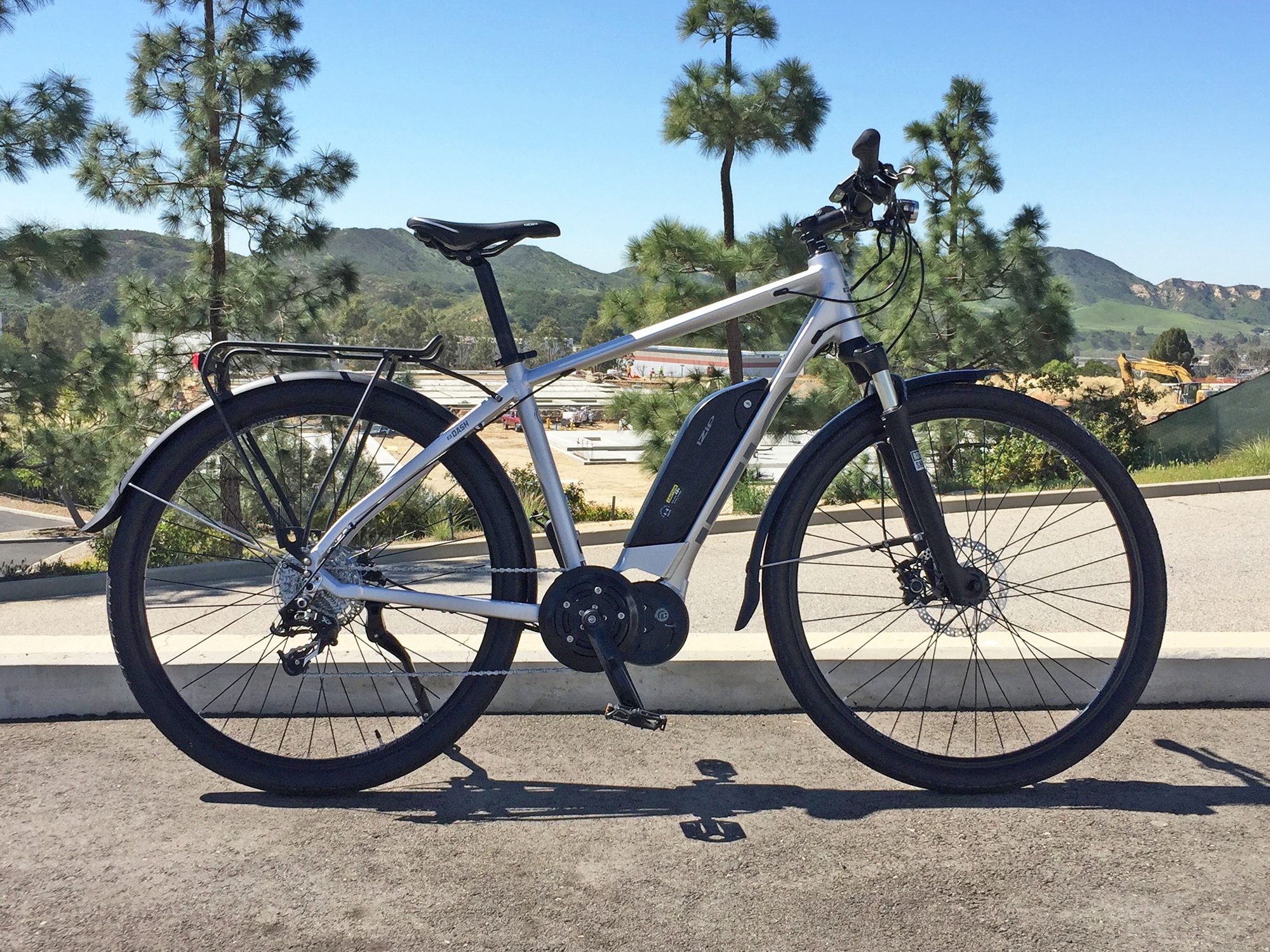
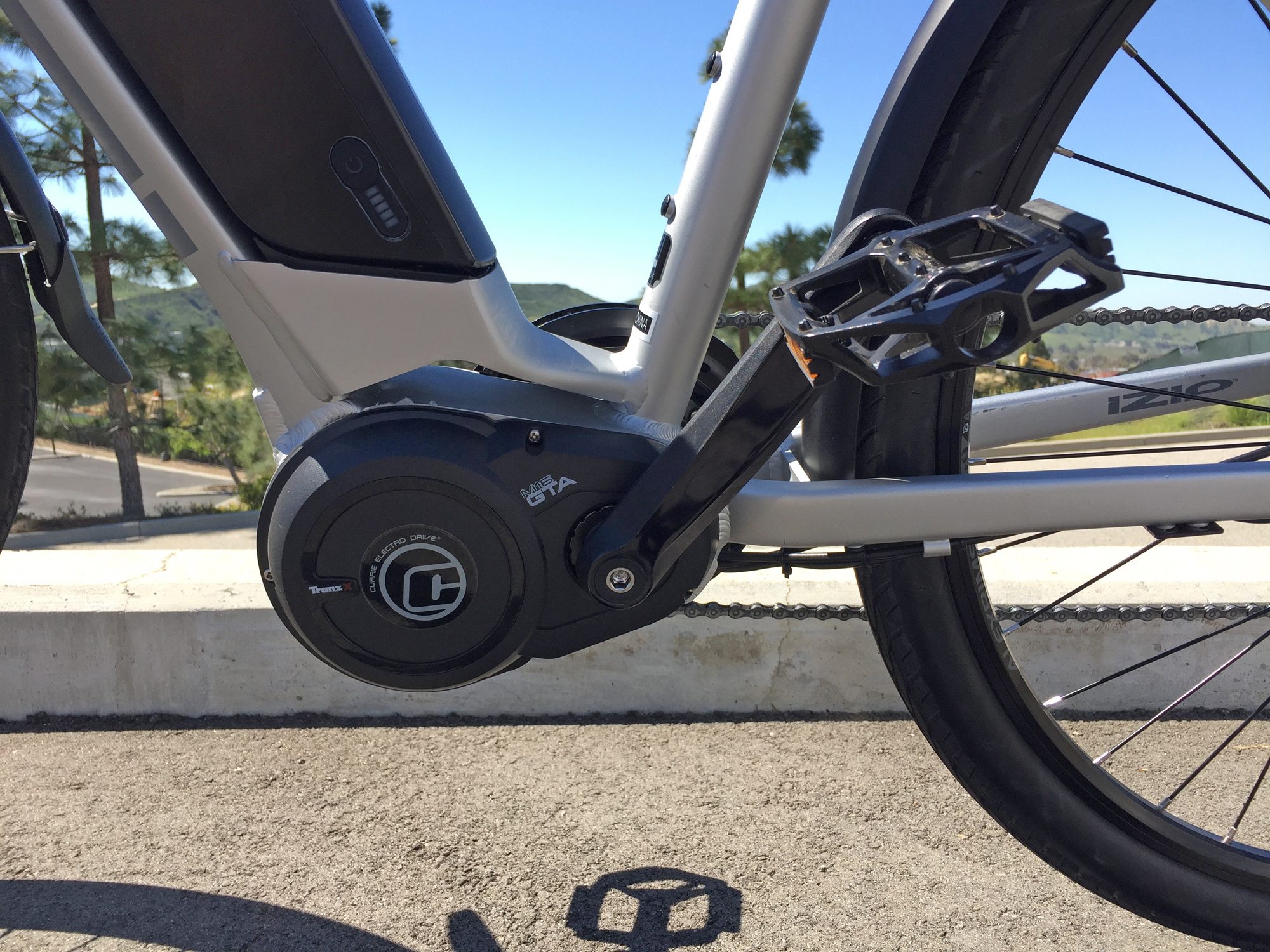
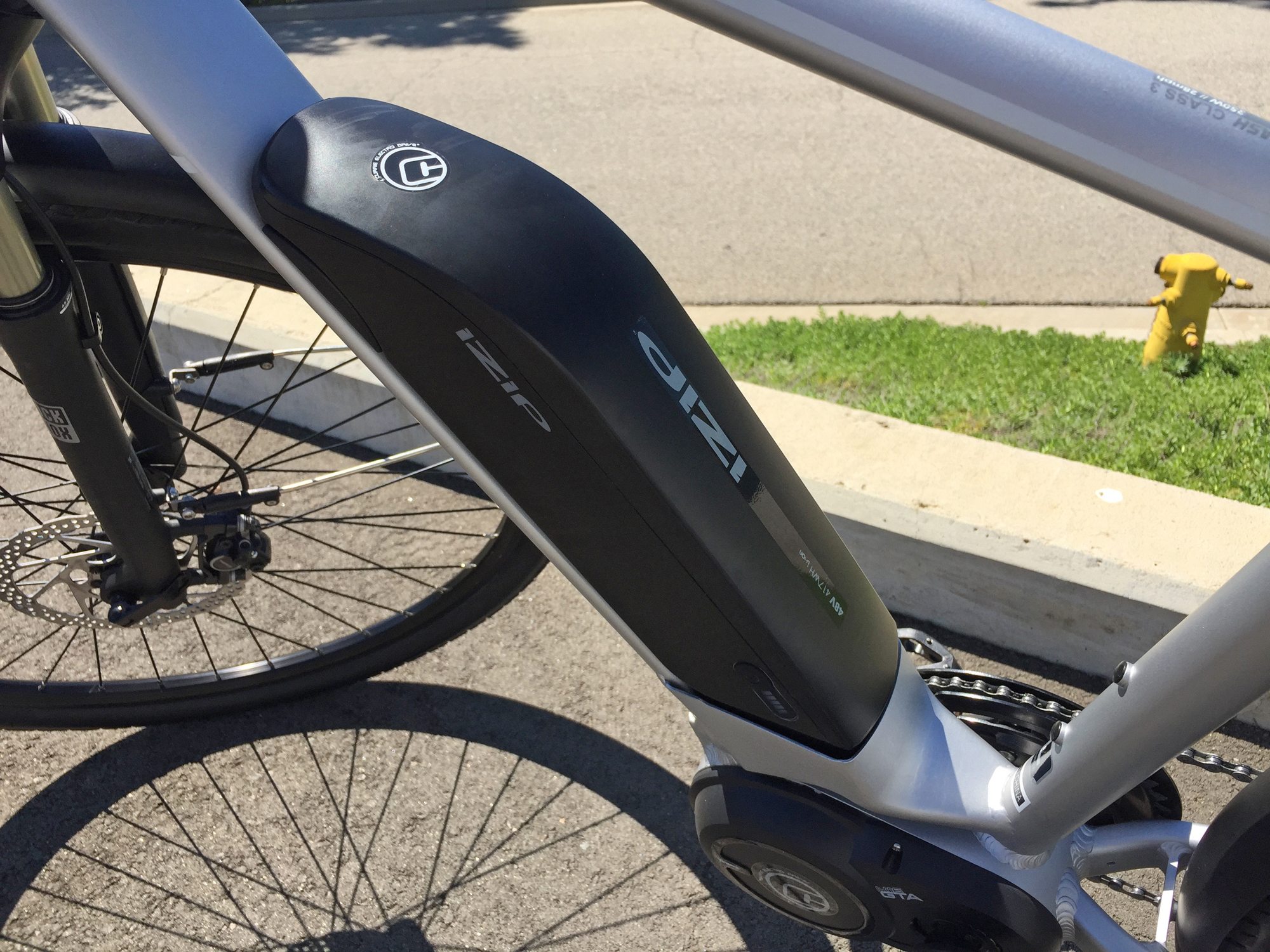
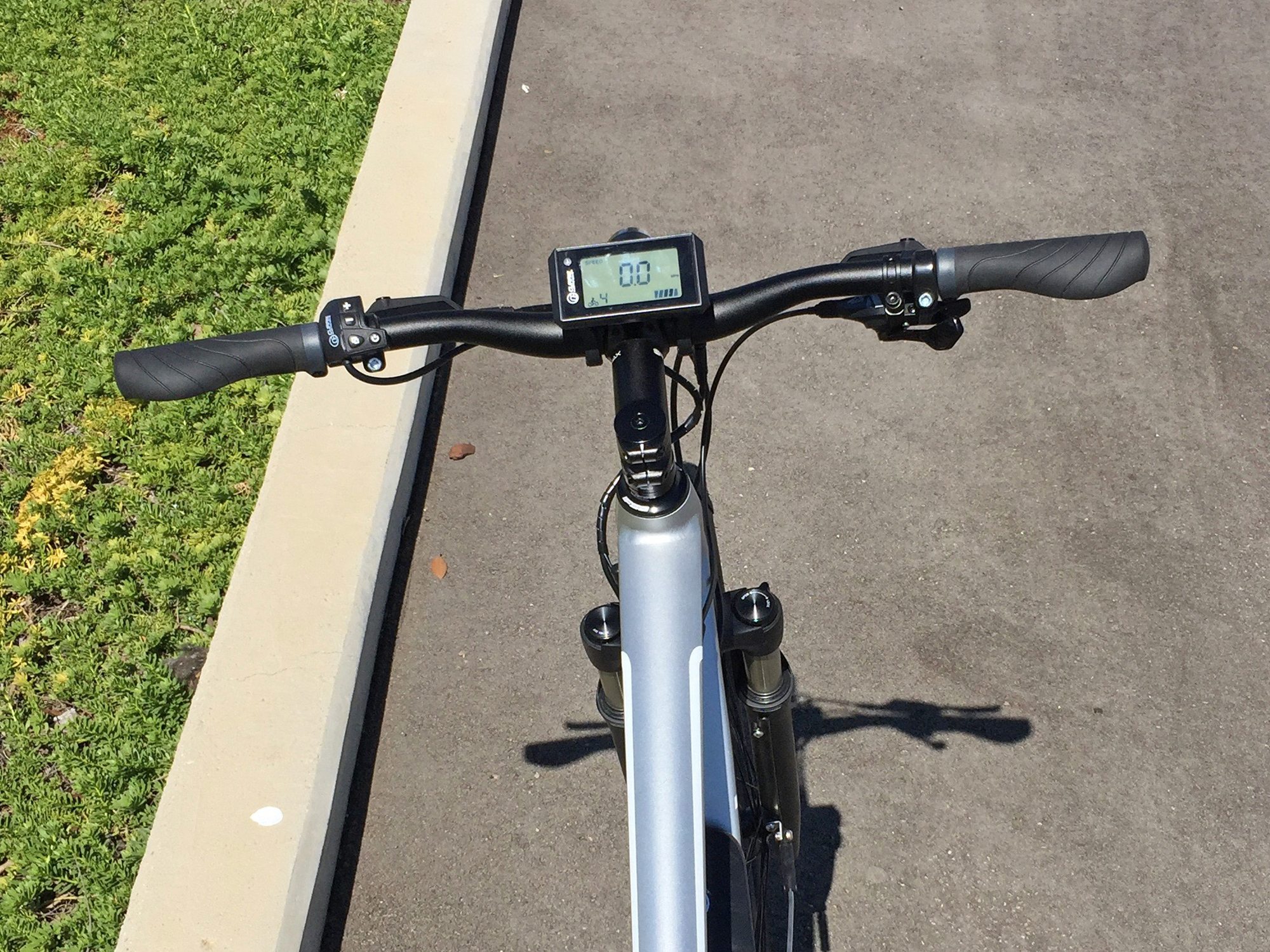
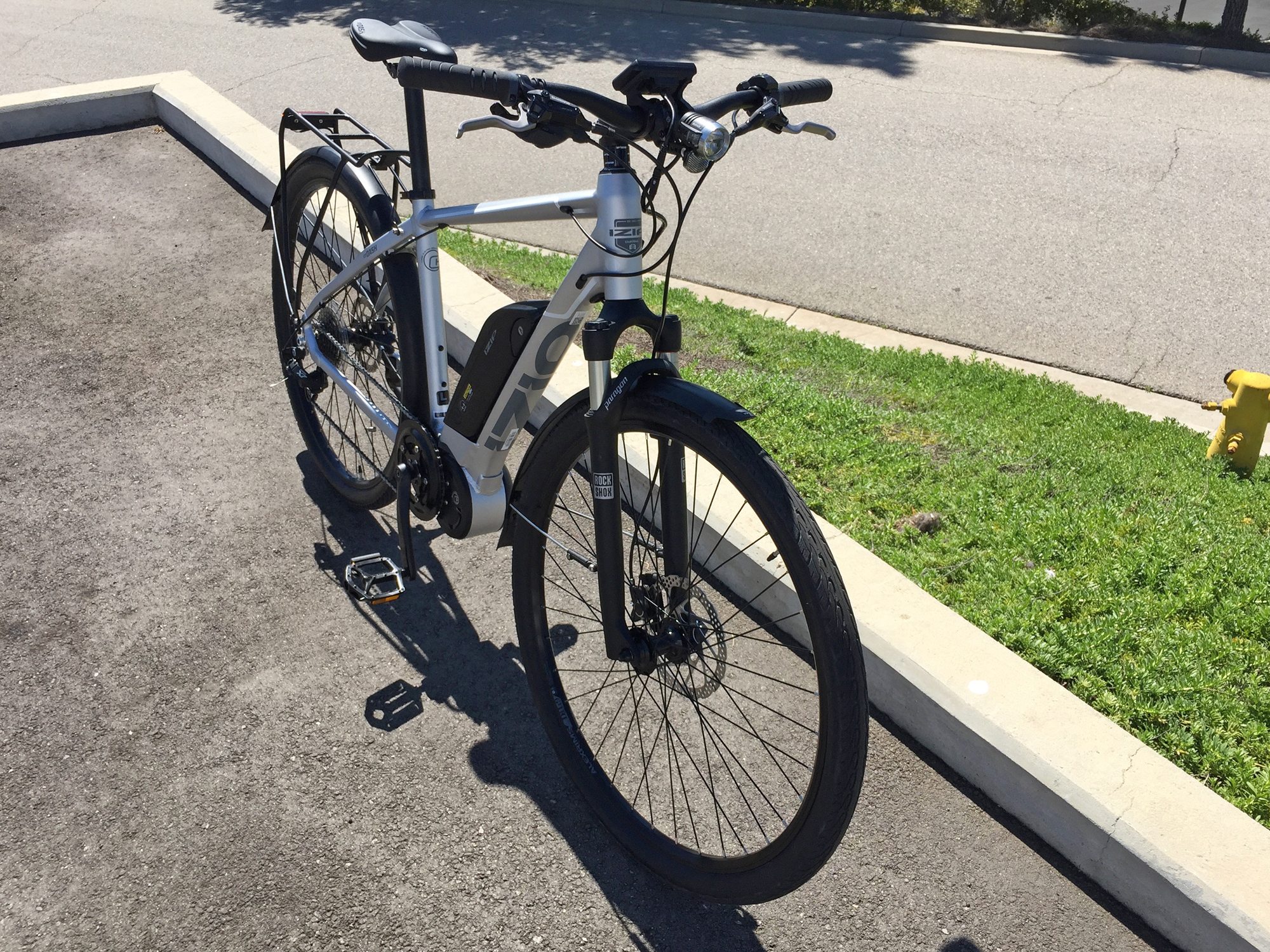
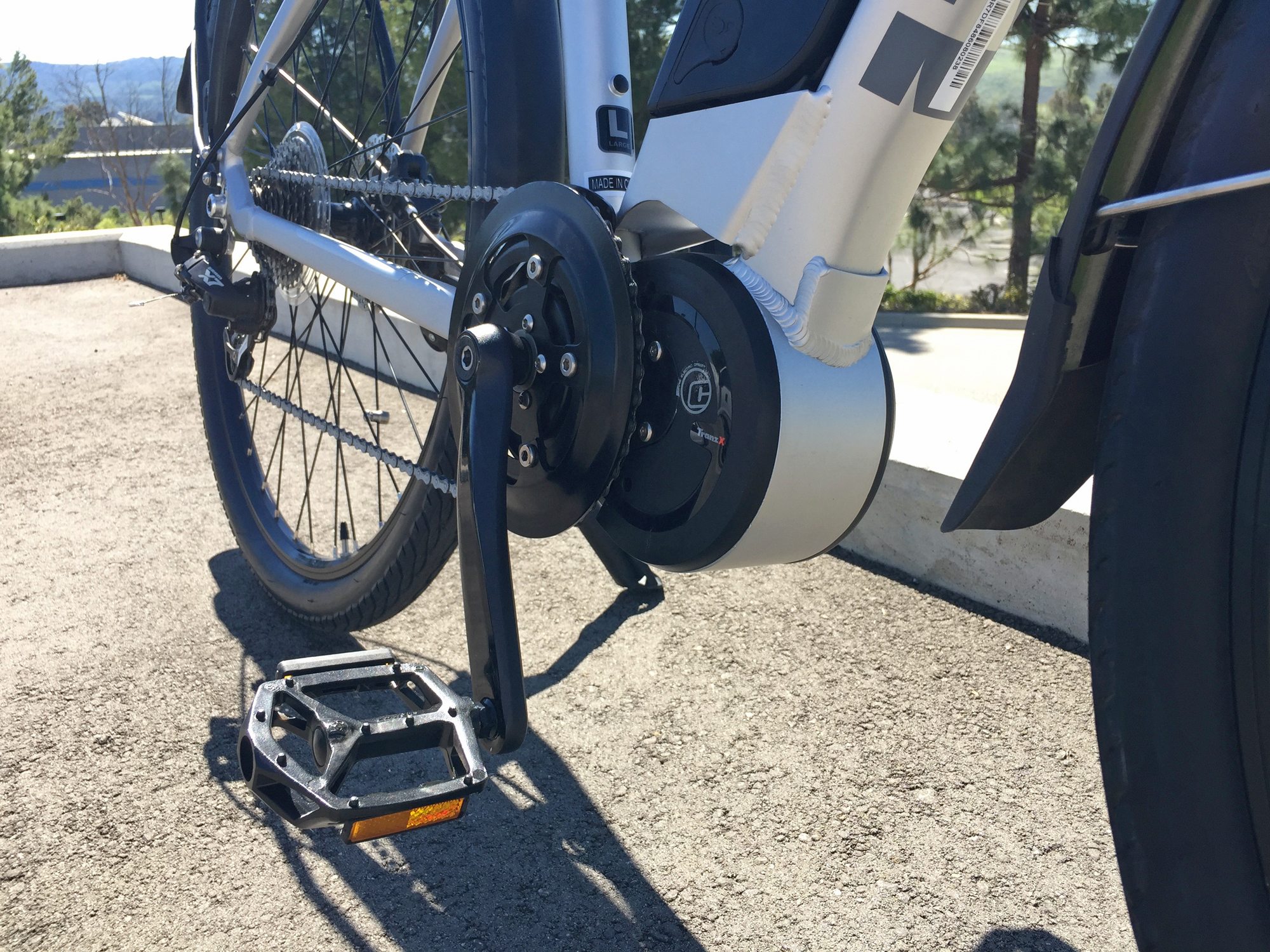
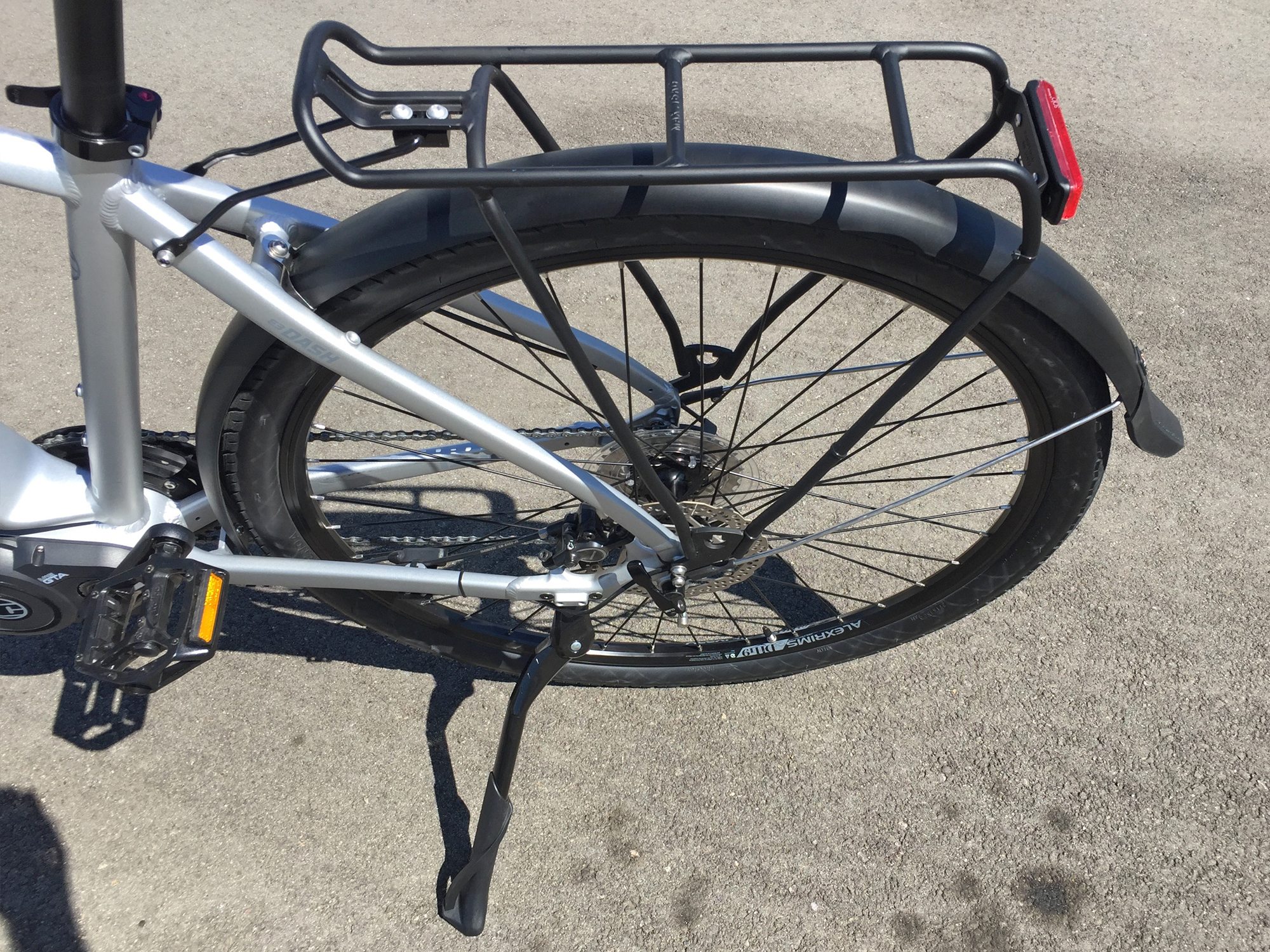
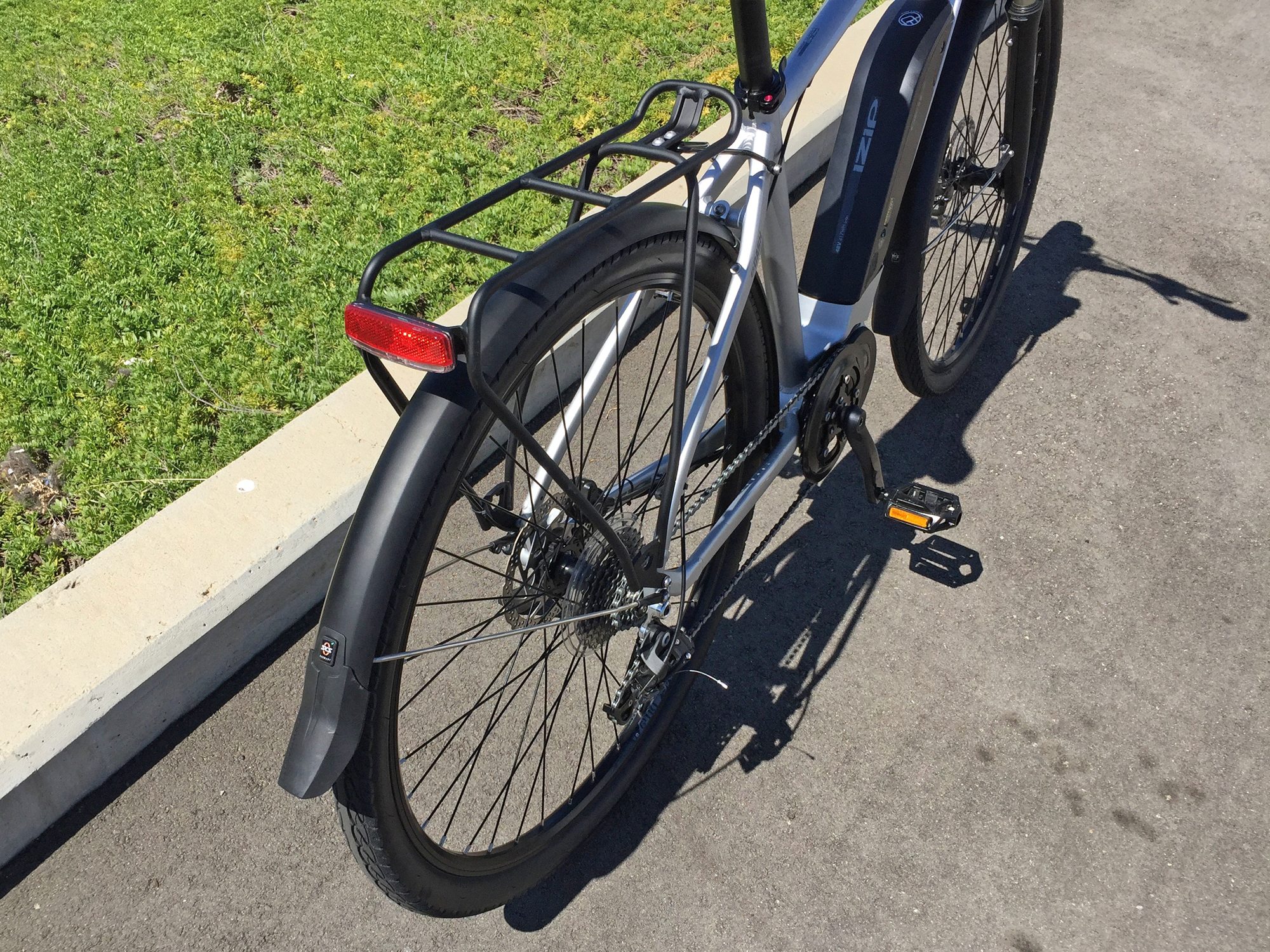
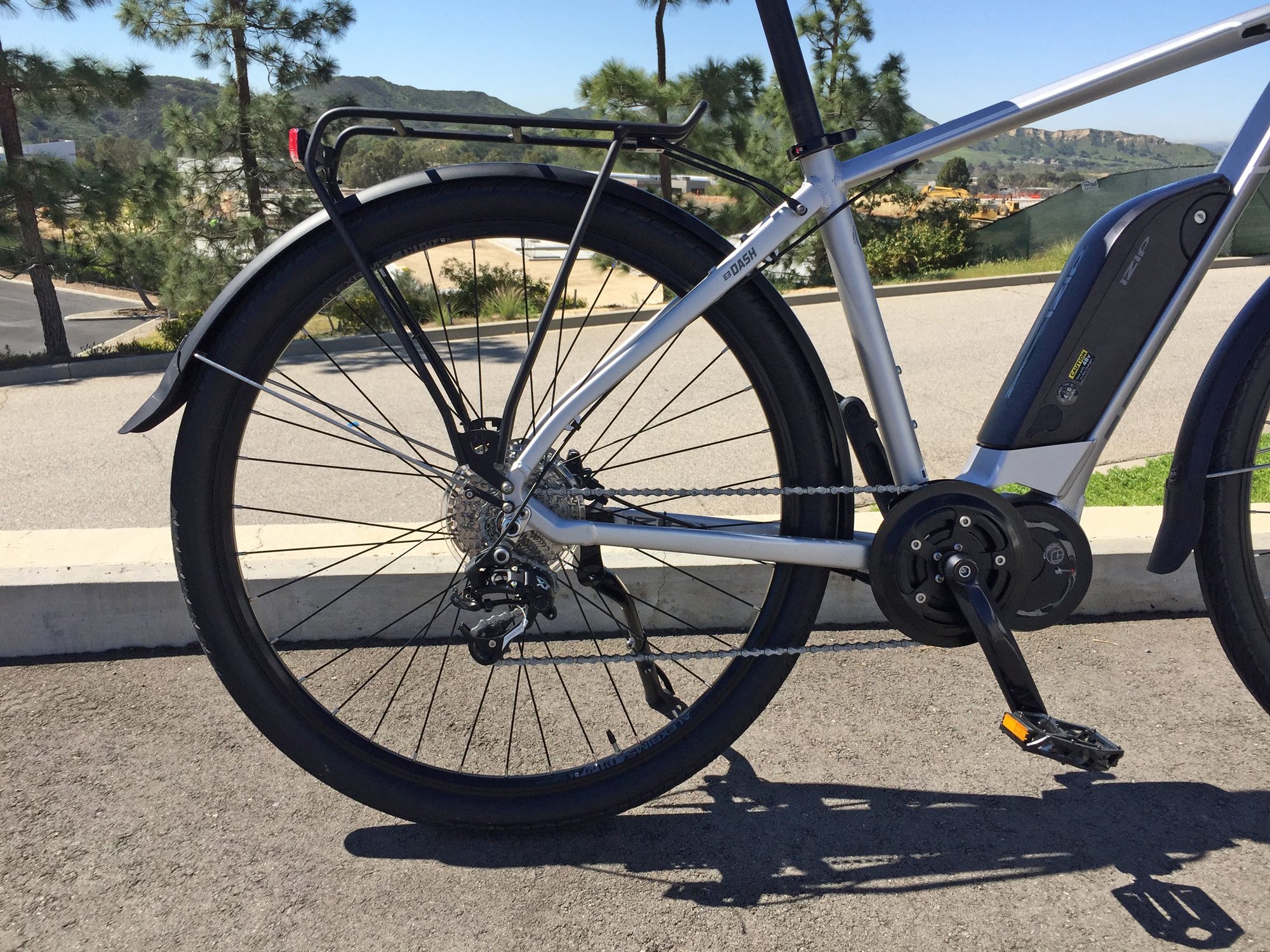
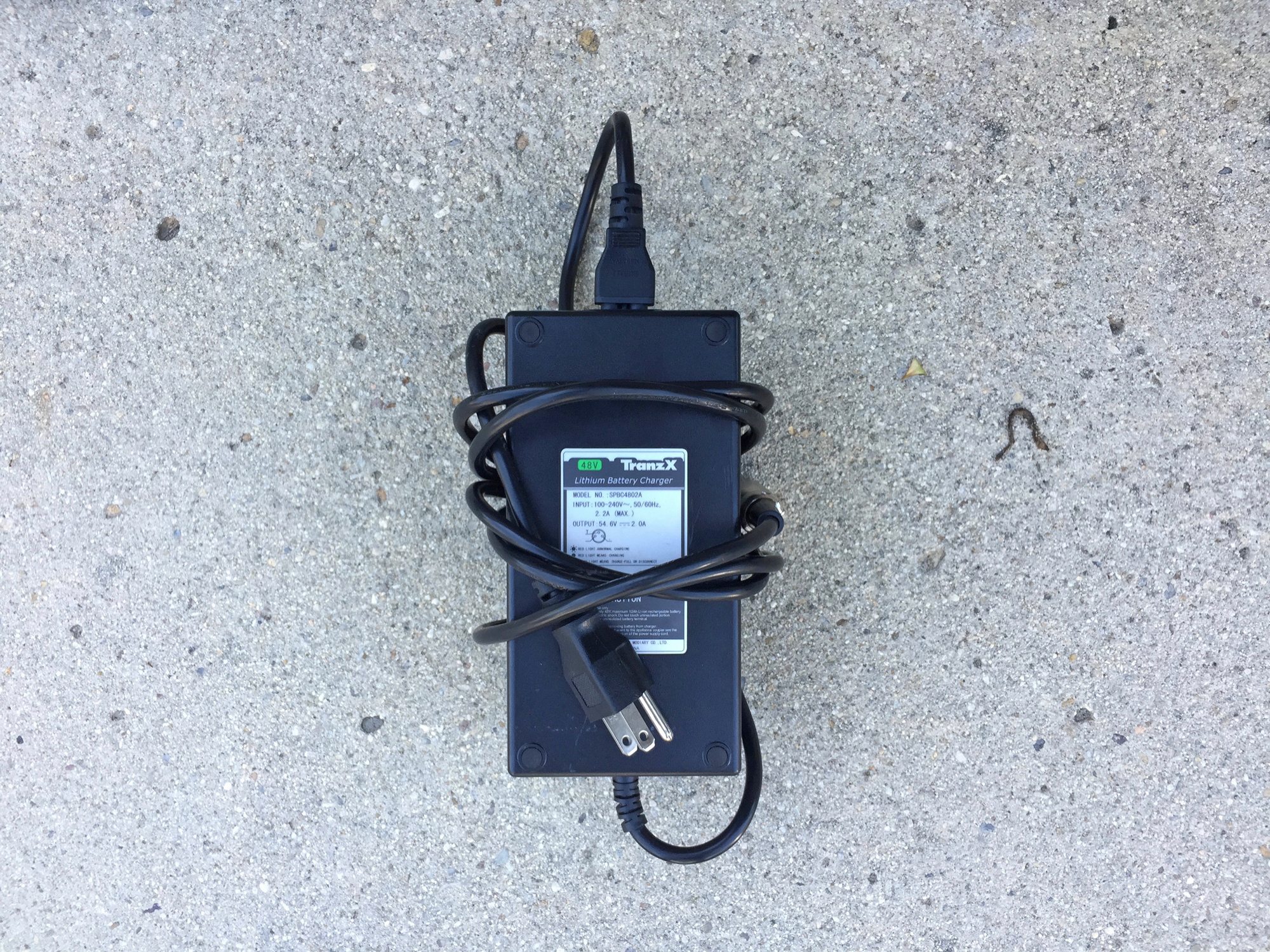

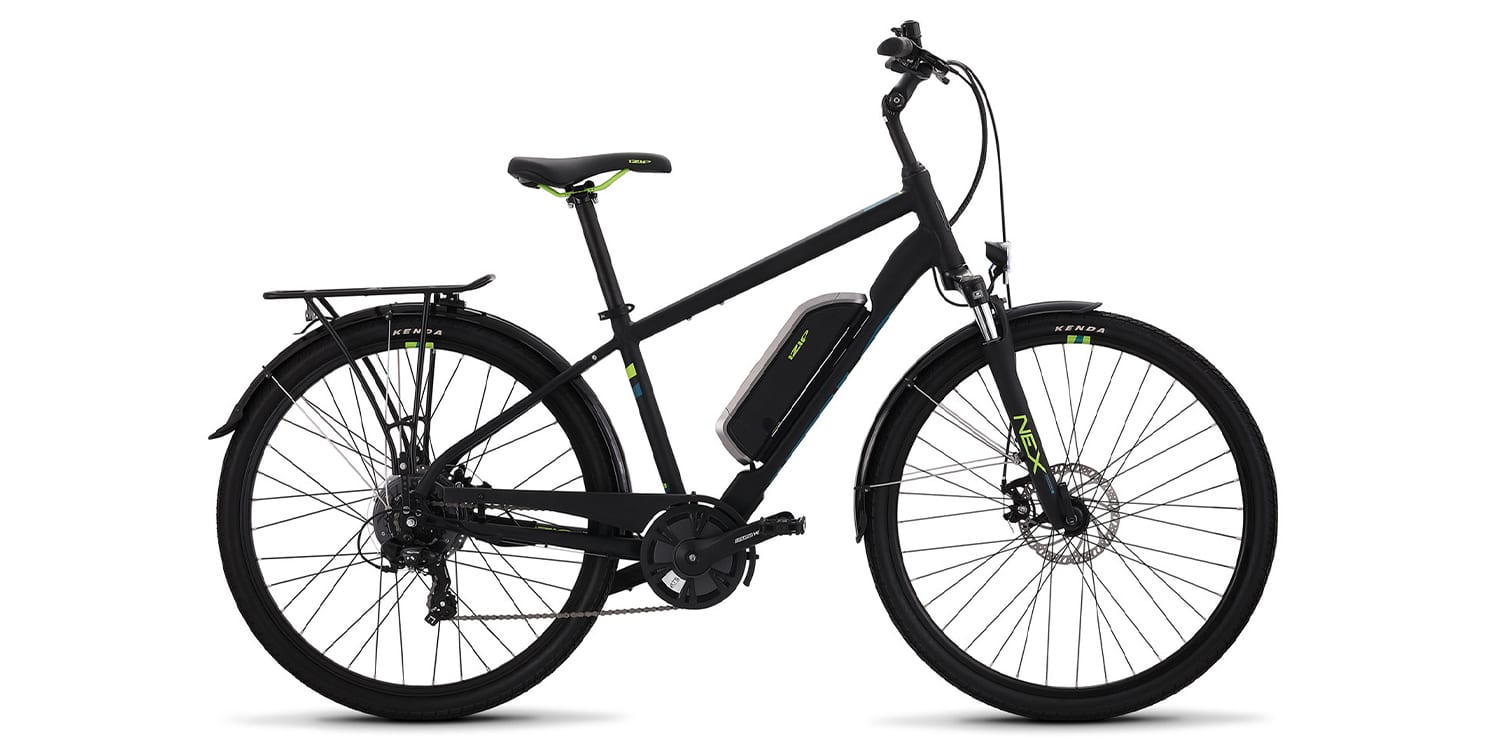
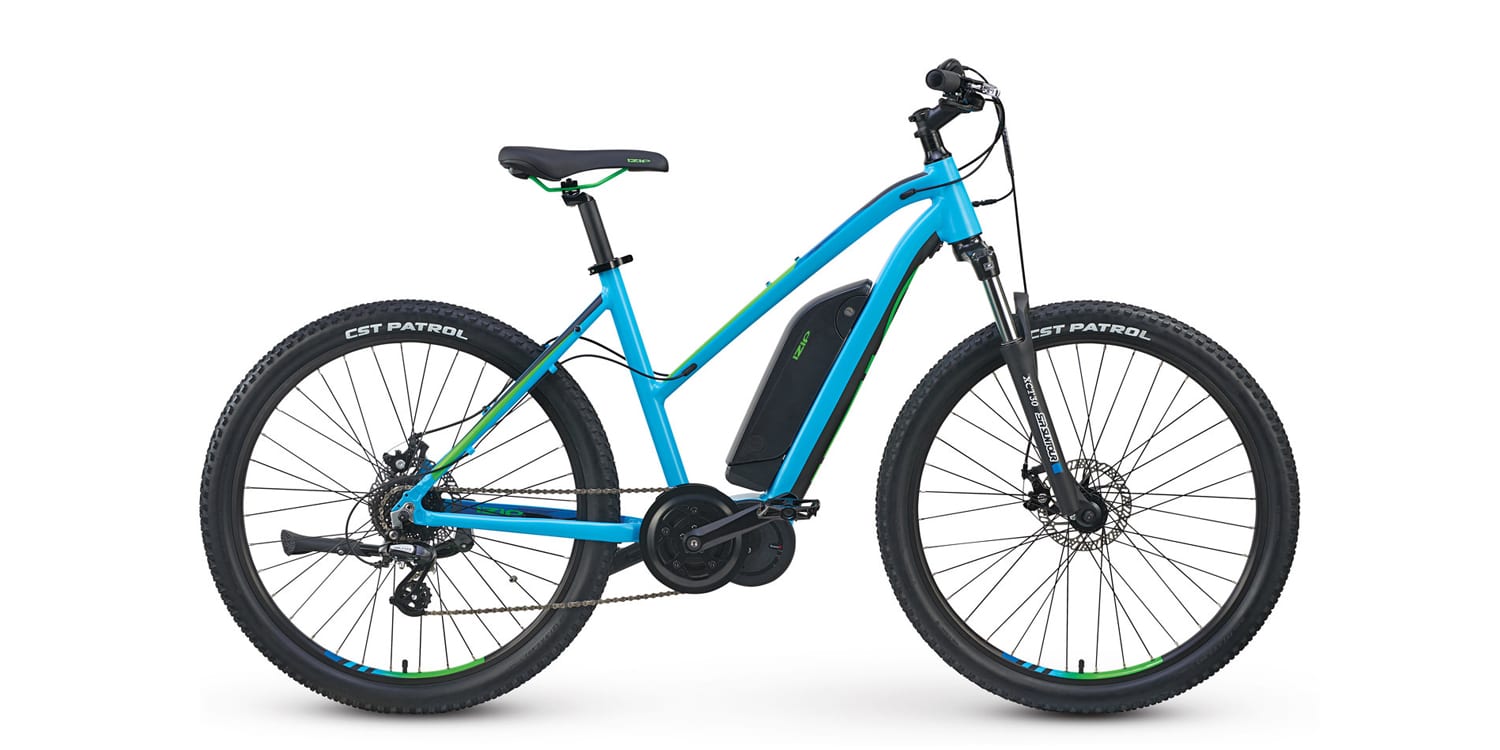
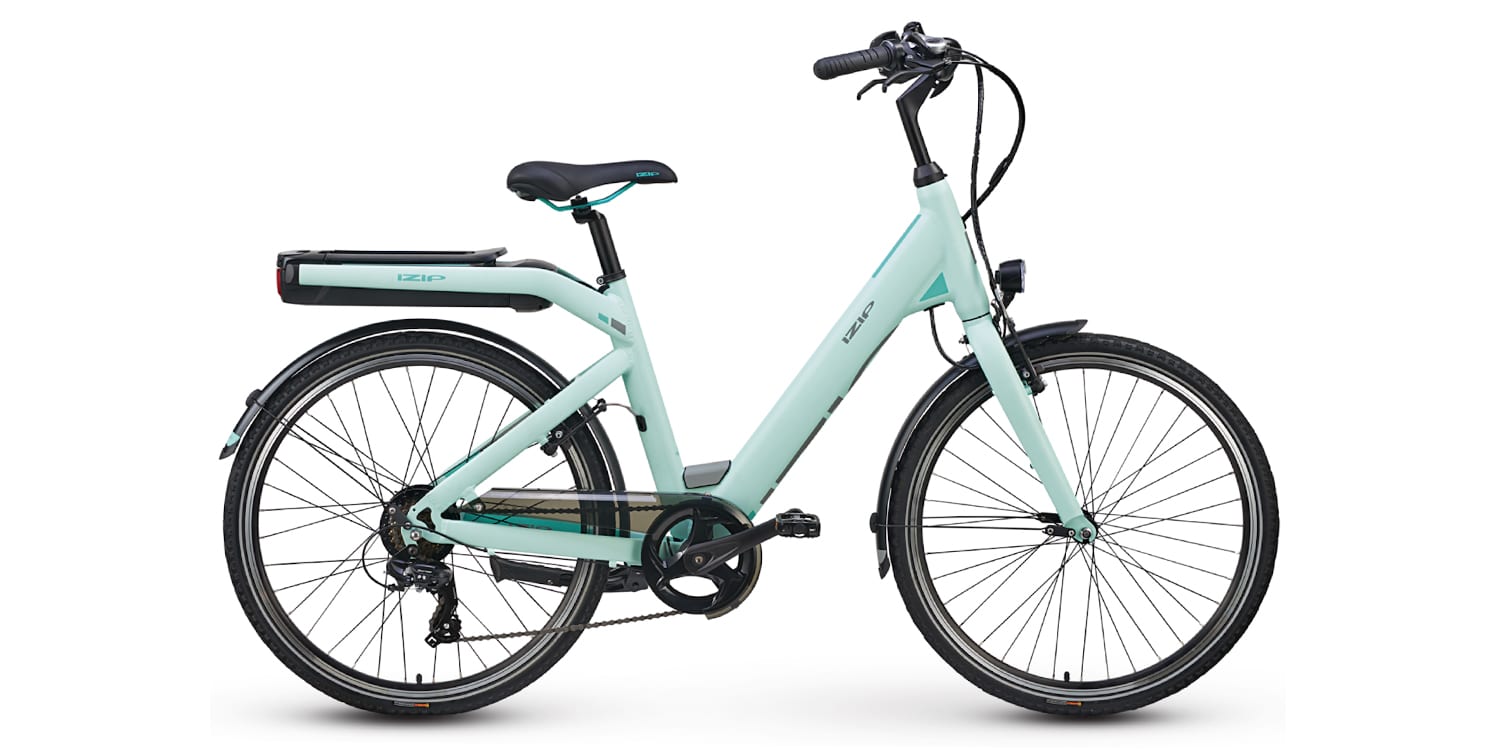
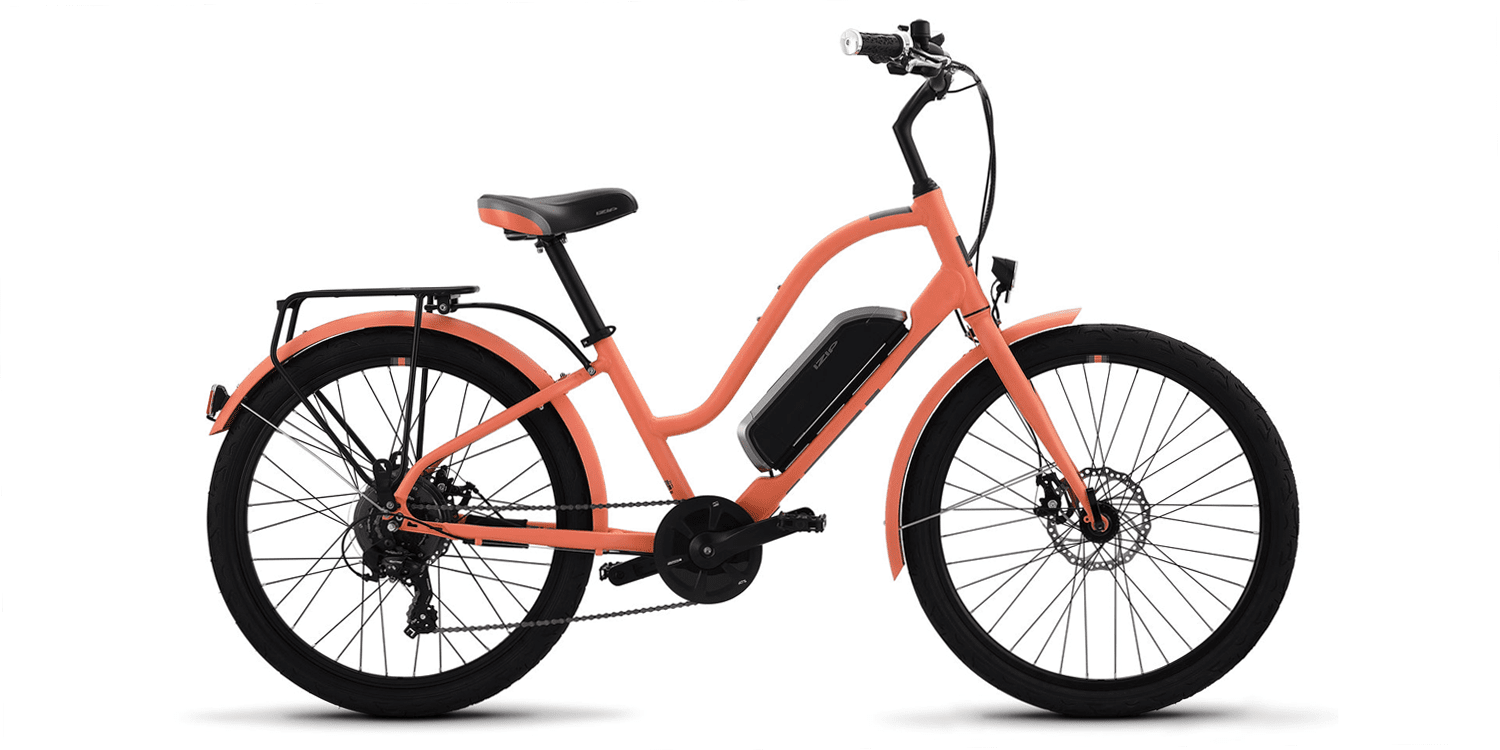
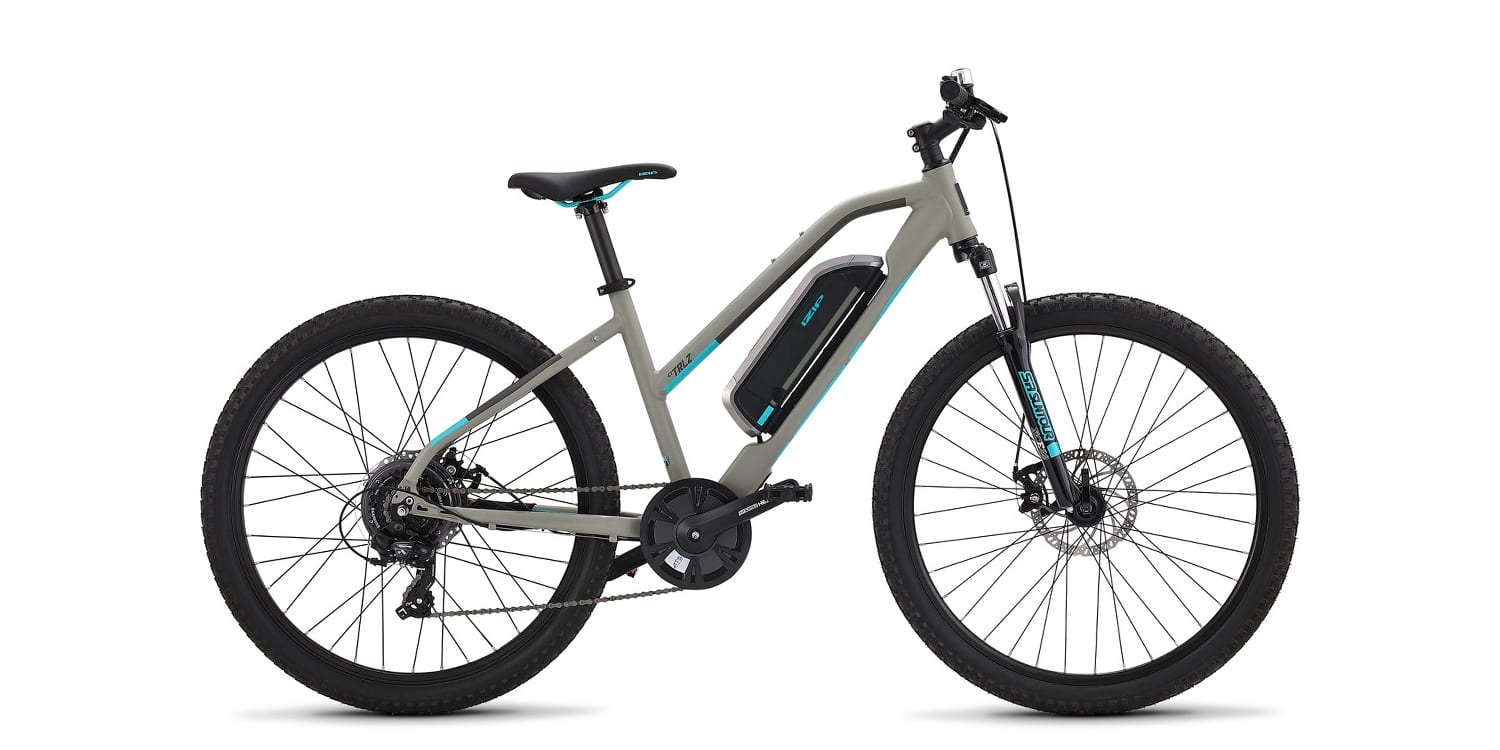

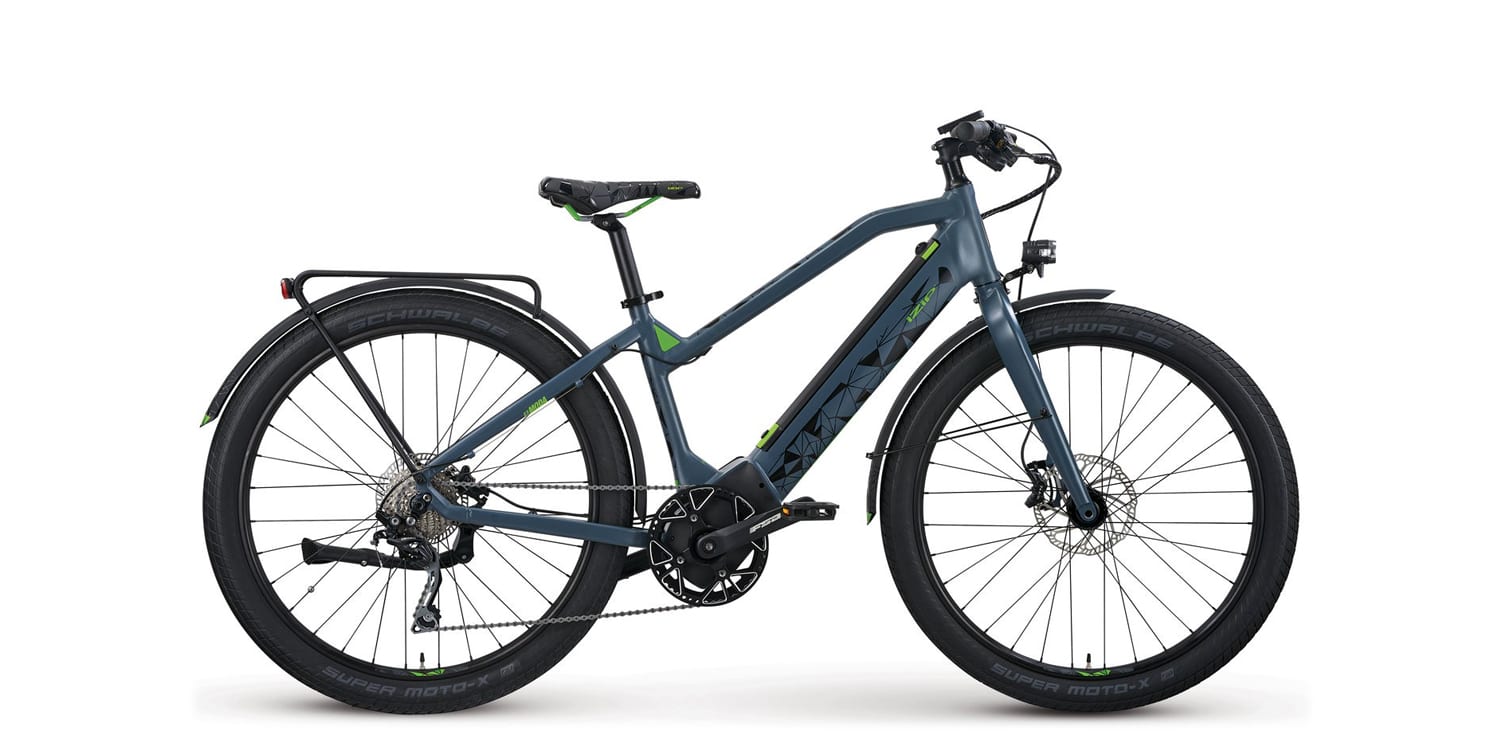
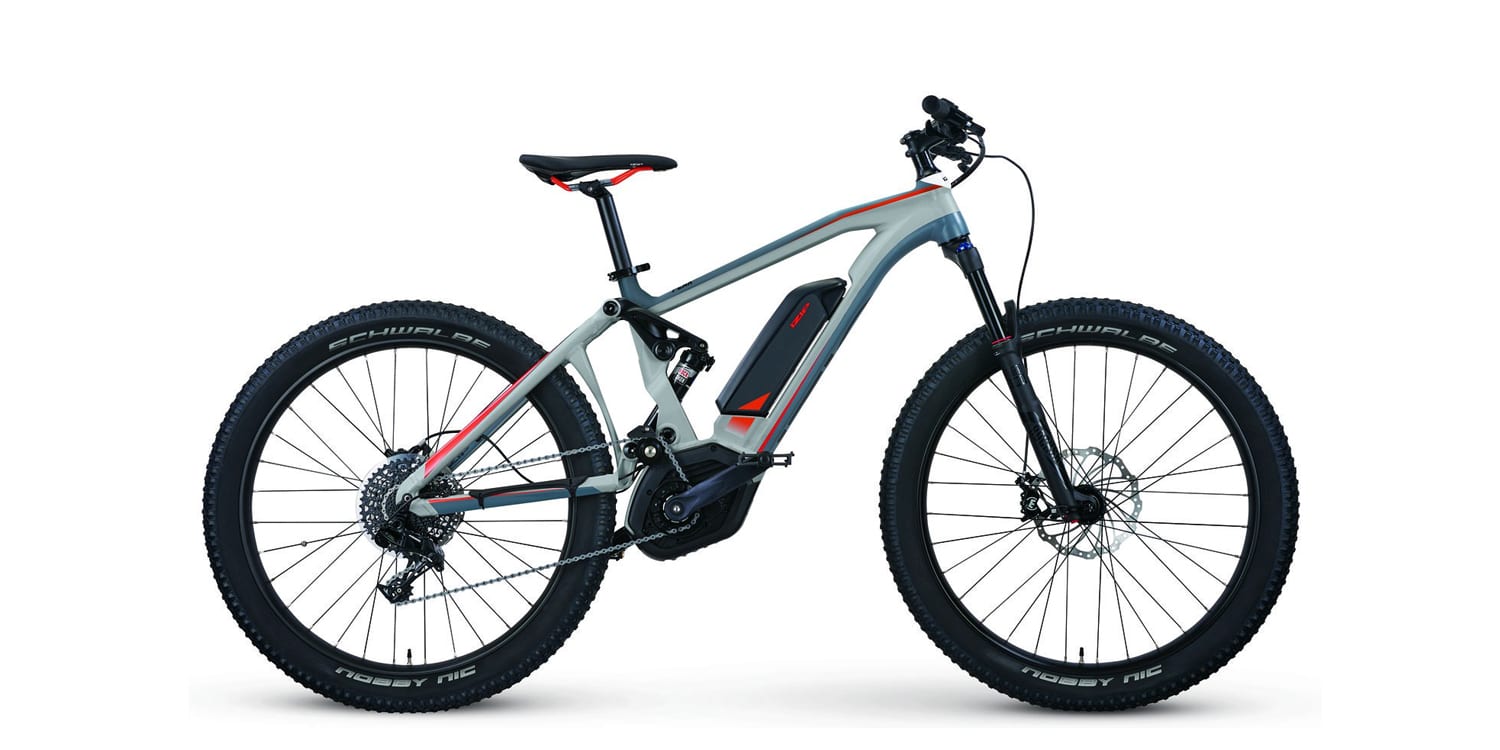
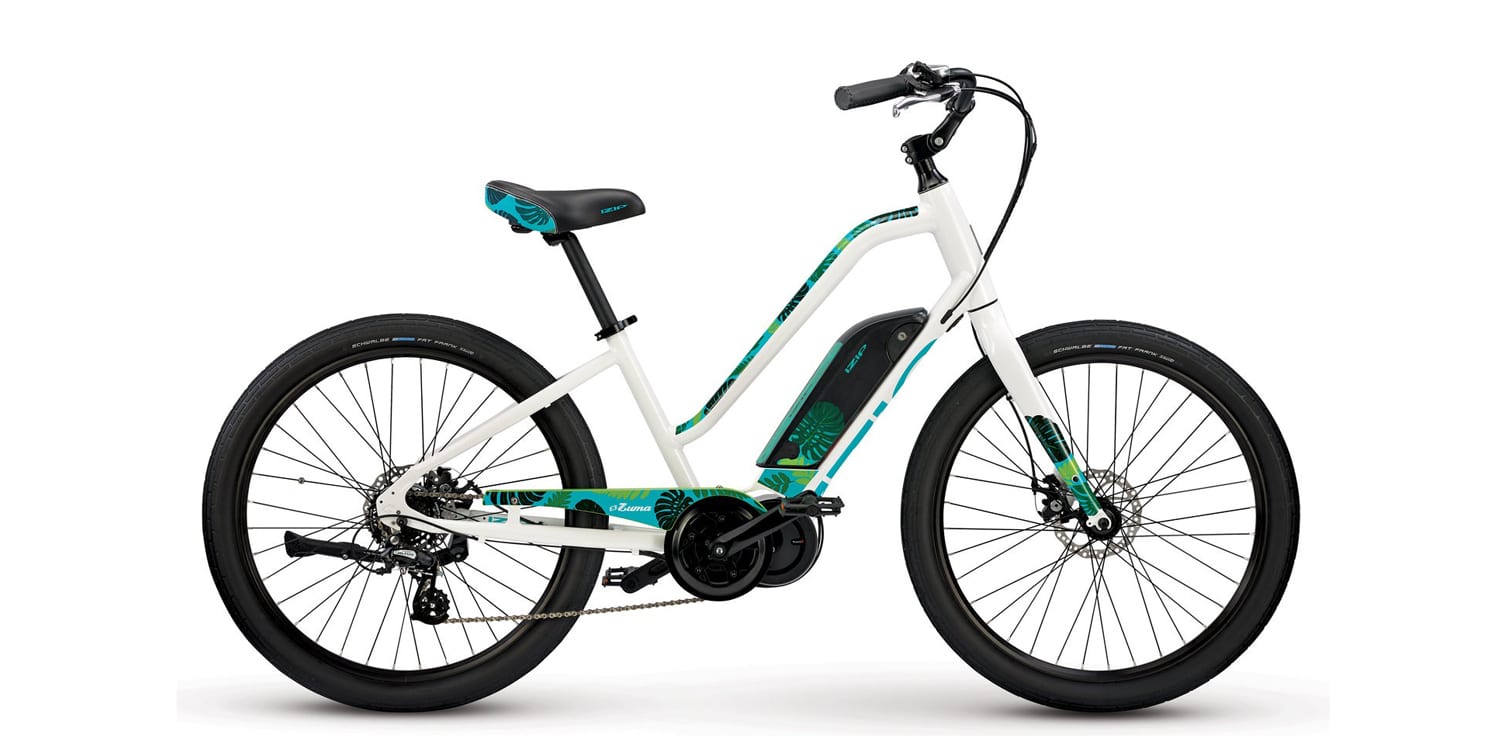
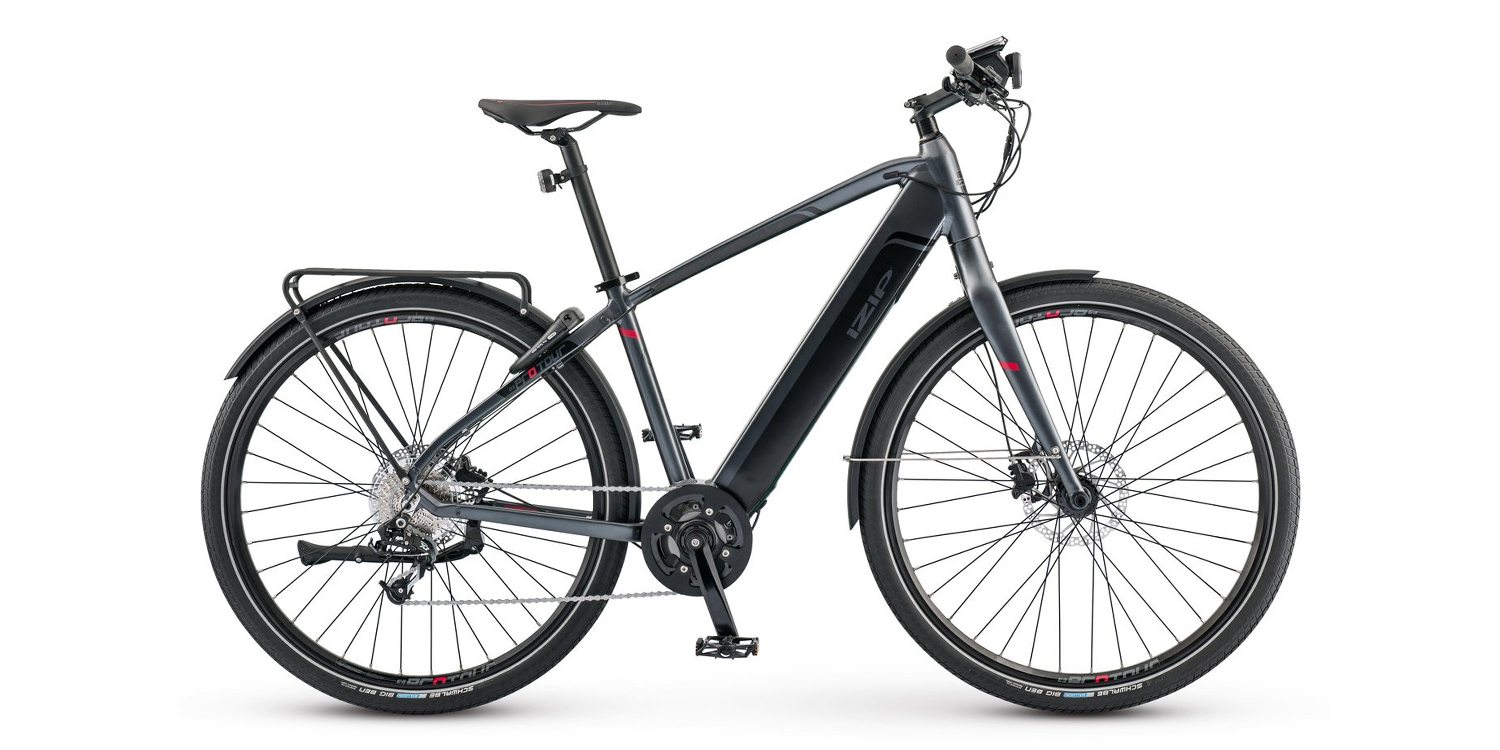
june kato says
Hey Court,
Thanks for all your reviews, and they have given me a lot of insights into getting my first e-bike, which is this iZip Dash! I love it! I live in L.A. and I have in the past been using a bus to commute 20 miles one way 3 days a week, and once a week on my Subauru. Now, I’m doing the e-bike commute and it takes about an hour each way! Less than the bus ride, and a little more or about the same as the car.
I don’t have any reference to compare this to any other e-bikes other than the Sondors, but I can feel the quality of this bike. I do not really like the lag between pedaling and when the electric assist kicks in, since it’s a cadence sensor. I also do not like the lack of gear change sensor: I have to basically stop pedaling for a split second when I change gears so I don’t mash the gears.
I did find that back-pedaling slightly seems to help with the delay associated with the electric assist stopping after when I stop pedaling. The delay seems shorter that way: Please confirm this next time you have a chance to ride this bike (what I do when I want to change gears without mashing them is to back-pedal slightly so that the motor stops quicker than when you simply stop pedaling: it seems to help the sensor to register the lack of pedal motion).
What I like about the bike are:
What I don’t like are:
Thanks Court, and keep up the great work!
June Kato
Court Rye says
Hi June,
I will definitely try the slight-backpedal approach to cutting the motor when shifting. I want to be careful so as not to shift while pedaling backwards, but I see the logic and think that’s a unique approach. Glad to hear that overall, the bike is performing well and seems like a good value for you. I like IZIP and agree that having a helpful dealer nearby is a big deal. It’s interesting that you say you want white because I also prefer the light colors for safety.
Thanks for the support and kind words, I’ve got more reviews on the way and you can always share more feedback here or connect with others in the EBR IZIP forums!
June kato says
Hey Court,
Yeah, the slight backpedaling before the gear change seems to help, and yes, I agree about being careful about not shifting while pedaling backwards: I try to shift after stopping / slight backpedaling.
I was really wanting to go for the Smartmotion Pacer (I hope I got it right, the commuter) in white, but I couldn’t find a dealer nearby, and was a little more pricey than the iZip Dash. I was not sure the extra $500 was worth it or not… and iZip was having a sale for their 2017 Dash models.
Court Rye says
Hi June, thanks for the clarification! I feel like both SmartMotion and IZIP do a good job… and it is nice to buy locally and be able to try the bike out first. I’m glad you found a good deal and hope it works out well for you! Feel free to chime in with feedback anytime, it’s nice to get that perspective from a real owner :)
Corbin says
Any thoughts about the e3 dash versus the Magnum Peak? It would mainly be a pavment and hard pack dirt daily commuter with occasional light trail riding. I’m a bigger guy – about 5’11 and 220 lbs. There are a bunch of reviews out there about the e3 but @court is the only good Magnum Peak review I could find.
Court Rye says
Hi Corbin, I like how the throttle is setup on the Magnum Peak and feel that it would perform better on hard packed dirt. You miss out on the fenders and rack but those could be added aftermarket if you need them. Magnum has done an excellent job with their products and they have a growing network of dealers where you might be able to take a test ride. IZIP has been around longer and their mid-drive is going to be more efficient but the shifting may require some finesse, check out June Kato’s comment about pedaling backwards briefly to cut power before shifting. An alternative would be to search around for a 2017 Haibike hardtail on sale. They use Yamaha and Bosch which I like better than TranzX and their designs are lighter and more refined than Magnum but won’t have a throttle. I hope this helps :)
Bob says
Court, Thanks for the review. I just bought this bike. Is there any reason you know of to change the programming of the bike through the CAN bus system? What setting do you think is reasonable for the amperage on the Support page of the display. You dialed it up to 15 for the test ride. I was thinking about putting an adjustable stem on. Have any recommendations for one? Thanks!
Court Rye says
Hi Bob! I’m not very knowledgeable when it comes to tuning the IZIP E3 Dash, but perhaps someone else will chime in or you can repost in the IZIP forums to see if anyone there is keen. I hope it works great for you in any case, ride safe out there!
Bob says
Thanks for the quick reply. I’ll try it out.
Abe Alexander says
Hi Court, I noticed that the stand over height on the “Geometry” section was missing for this bike. I went to the manufacturer’s website and looked it up. The stand over height is posted as 749.0 mm which converts to approximately 29.5 inches. The reference for that spec sheet was at izipelectric.com/e3-dash-diamond-frame (torwards the bottom of the page) Thanks! – Abe
June Kato says
Hello again Court, I’ve had this 2017 iZip Dash for two years now! I’ve used this for my daily commute 3-5 days a week and no major concerns, besides the ones that were already mentioned by you in the review, which were no motor-inhibitor when brake is applied, and no gear sensing. These are pretty minor issues compared to the fact that the bike is very stable and solid, especially at higher speed above 20 mph. I’ve added a large pannier and haul groceries sometimes, and even then with the added weight, the bike is like a truck! But it also is a joy to ride at high speed, around 28 mph when the occasion arises.
Now that it’s been a couple of years, I’ve been noticing reduction in the battery range. Do you have any info on if/where I can get a replacement TransX battery pack for this bike? The place I picked the bike up from said that iZip is in business transition, and is hard to get a hold of. Or do you have any recommendation on where to have the battery pack refurbished around Los Angeles area?
Please keep up the great work!
Sincerely,
June Kato
Court says
Hey June! Great question, I do have a tip for you. There’s this company near LA that is specializing in ebike battery repacking or replacement, they even do capacity upgrades. The company is called FTH Power and I got to visit their factory and learn all about it a while back. I made this post in the forums, check it out and let us know if they can get you helped, or maybe reach out to Sam from the Electric Bicycle Center to see if they have a connection with Curry Technologies and TranzX :)
ernest schulze says
Hey Court, this is a 3000 mile review of the IZip E3 Dash I purchased based on your recommendations and the Electric Bicycle Center in Fullerton.
Thanks for your help.
Court says
Great list, Ernest! Thanks for sharing, I hope you find another great ebike! Let me know if you have any questions, or just give me a text (my number is on the contact page) and we can chat about it :D